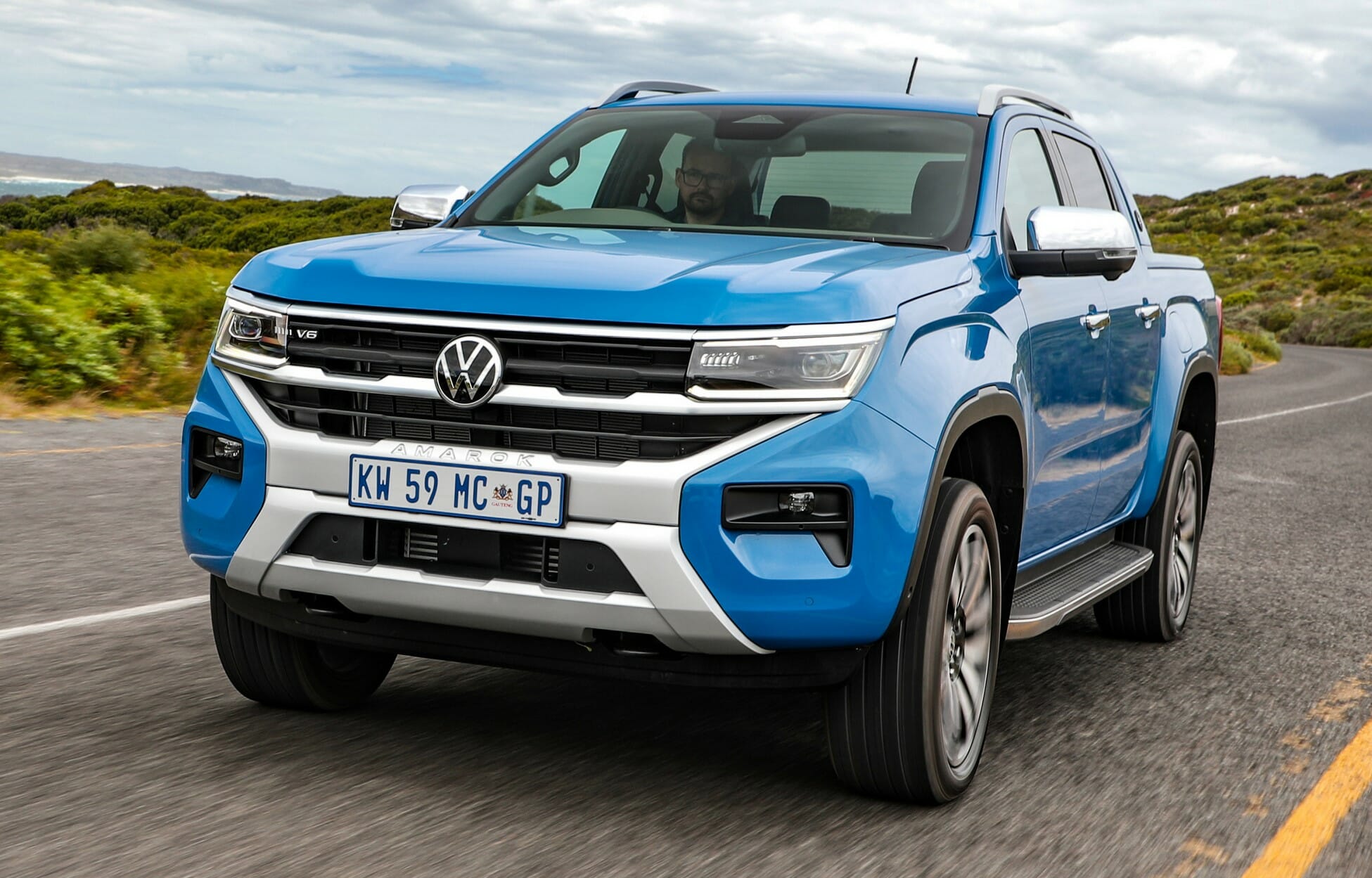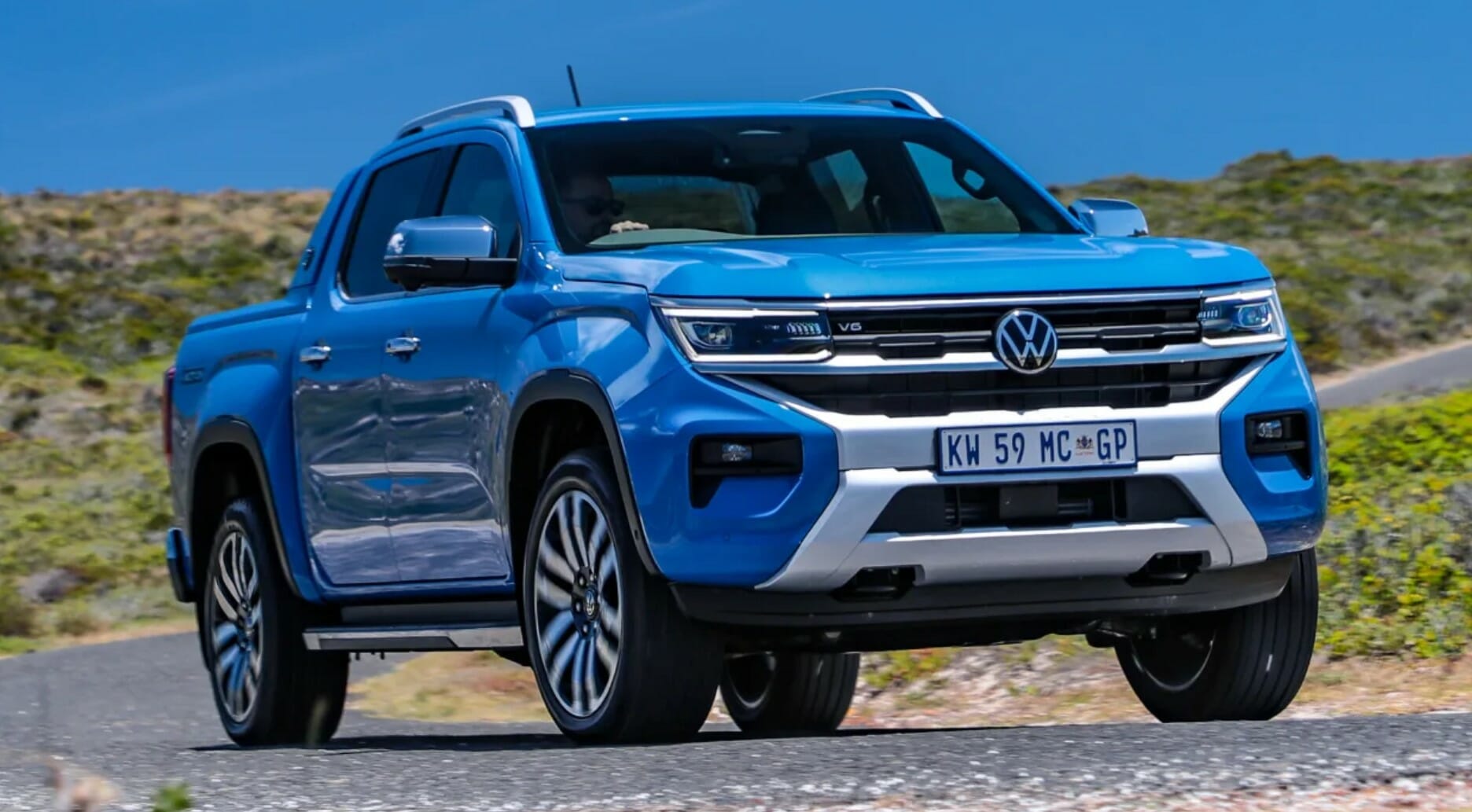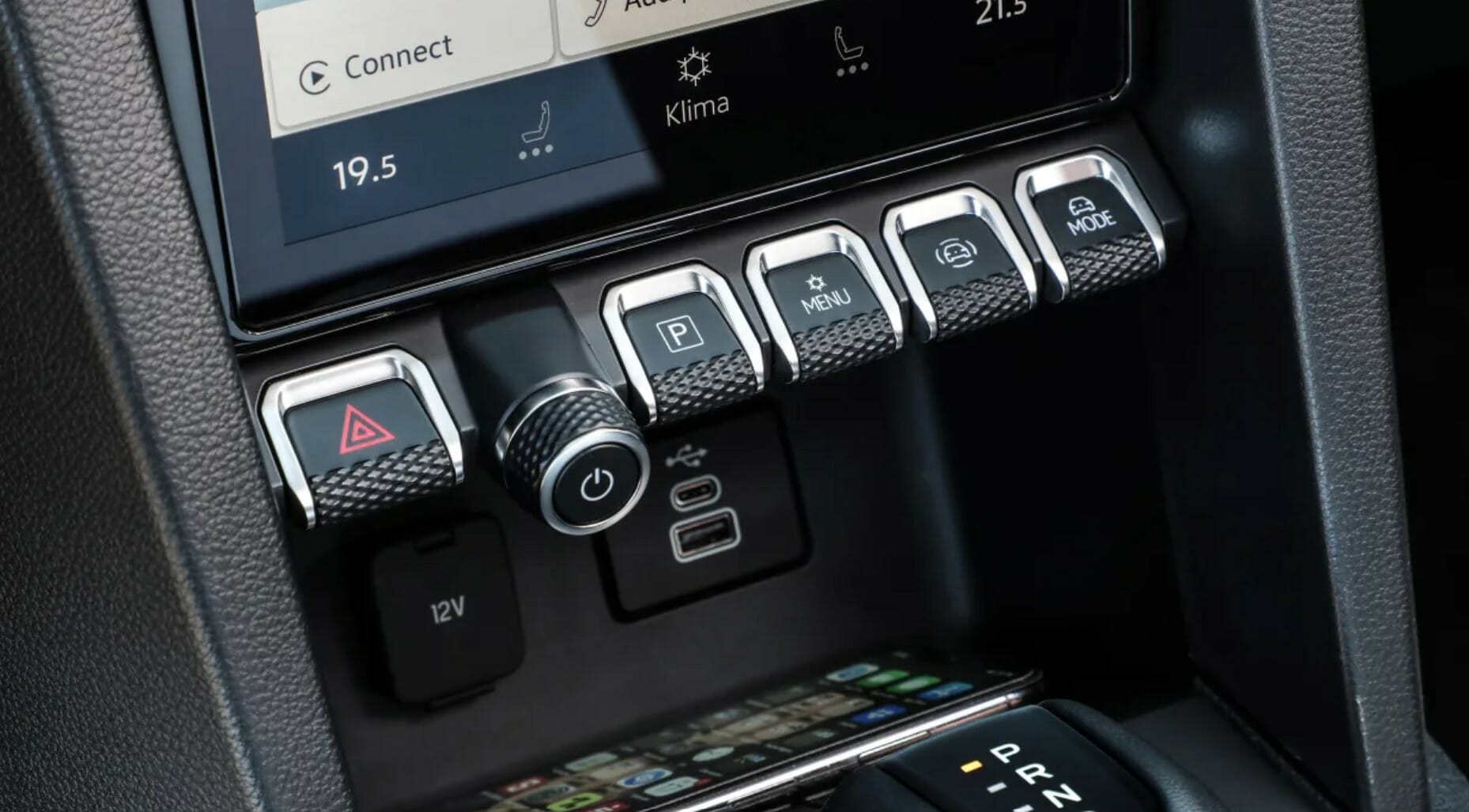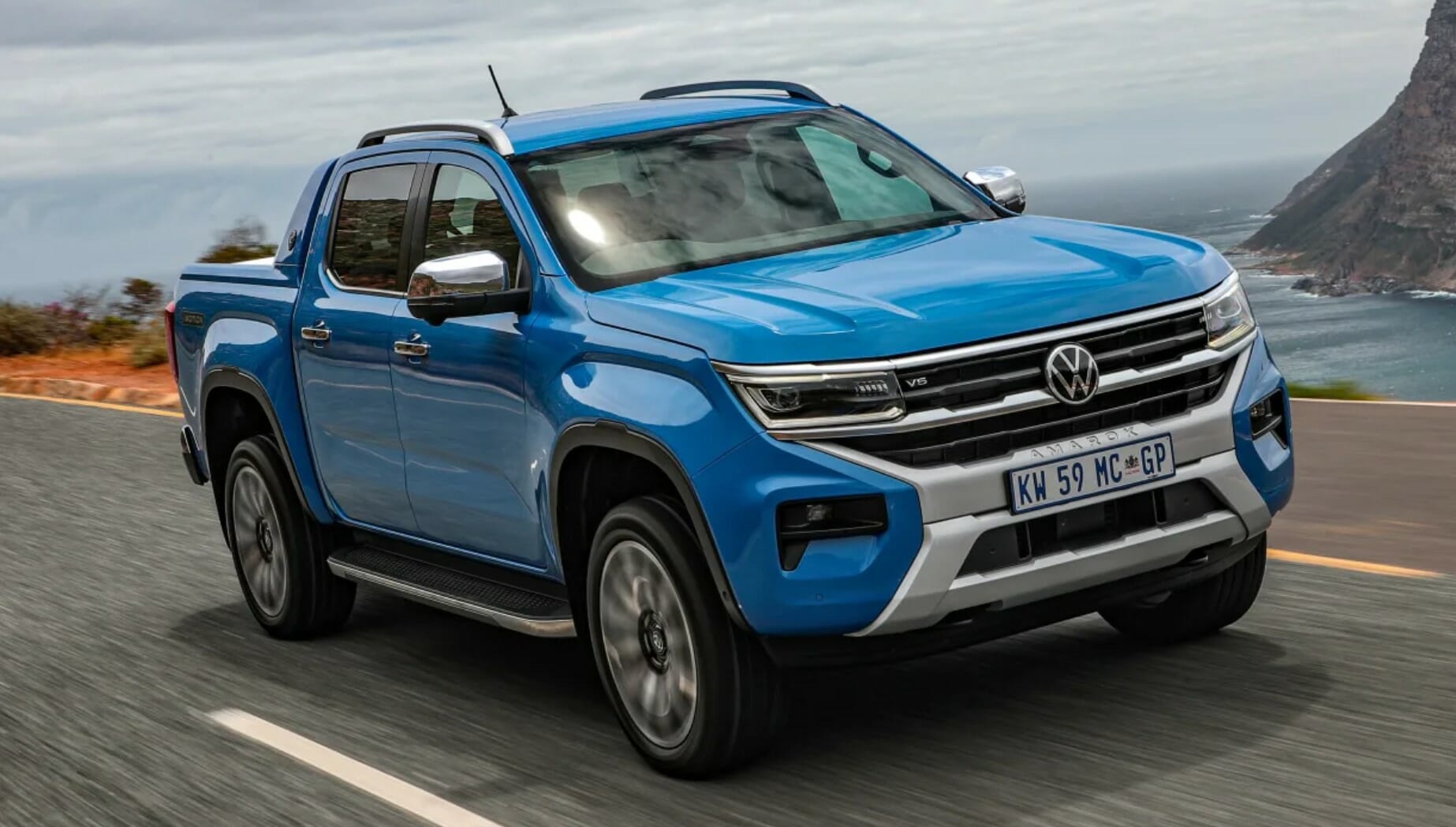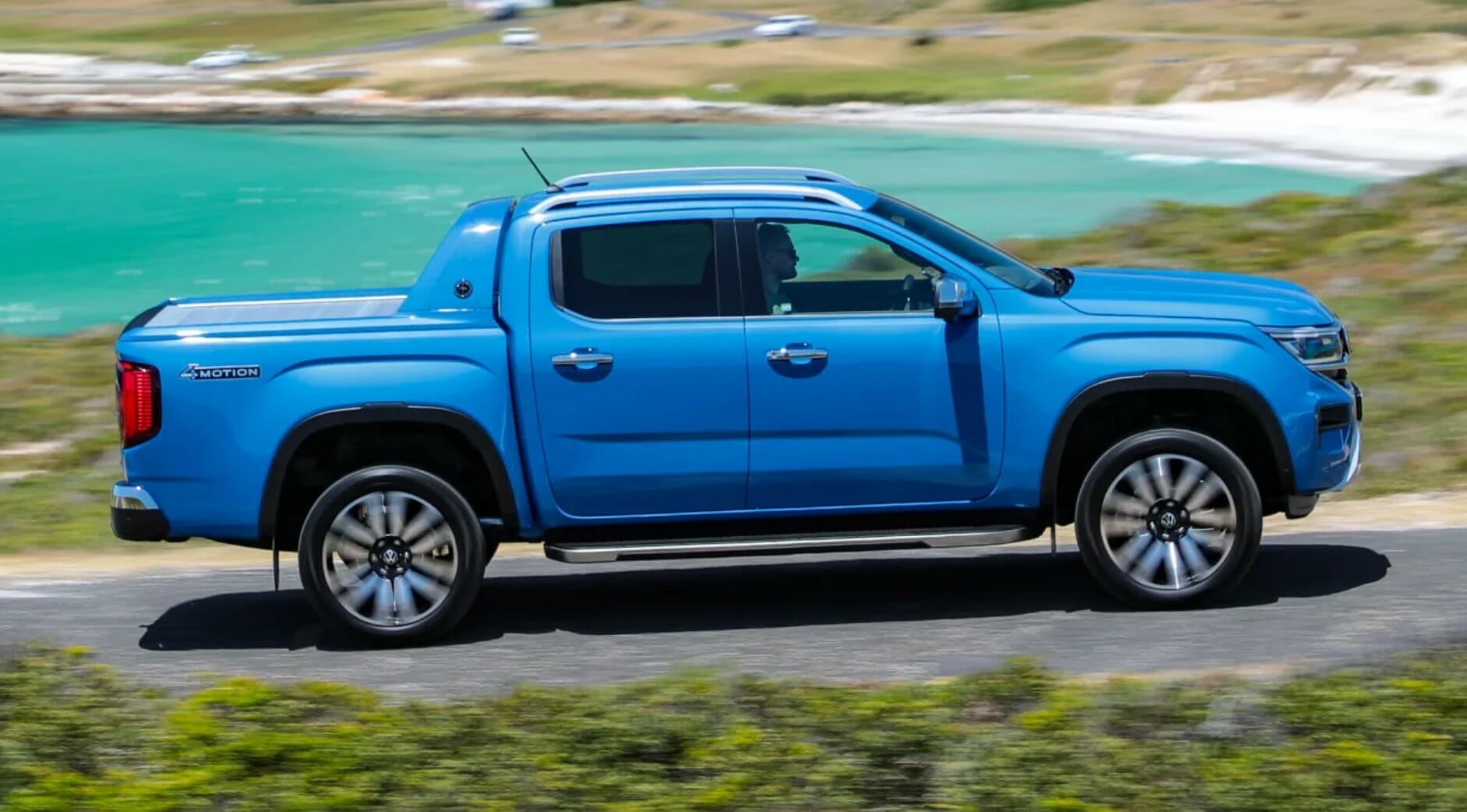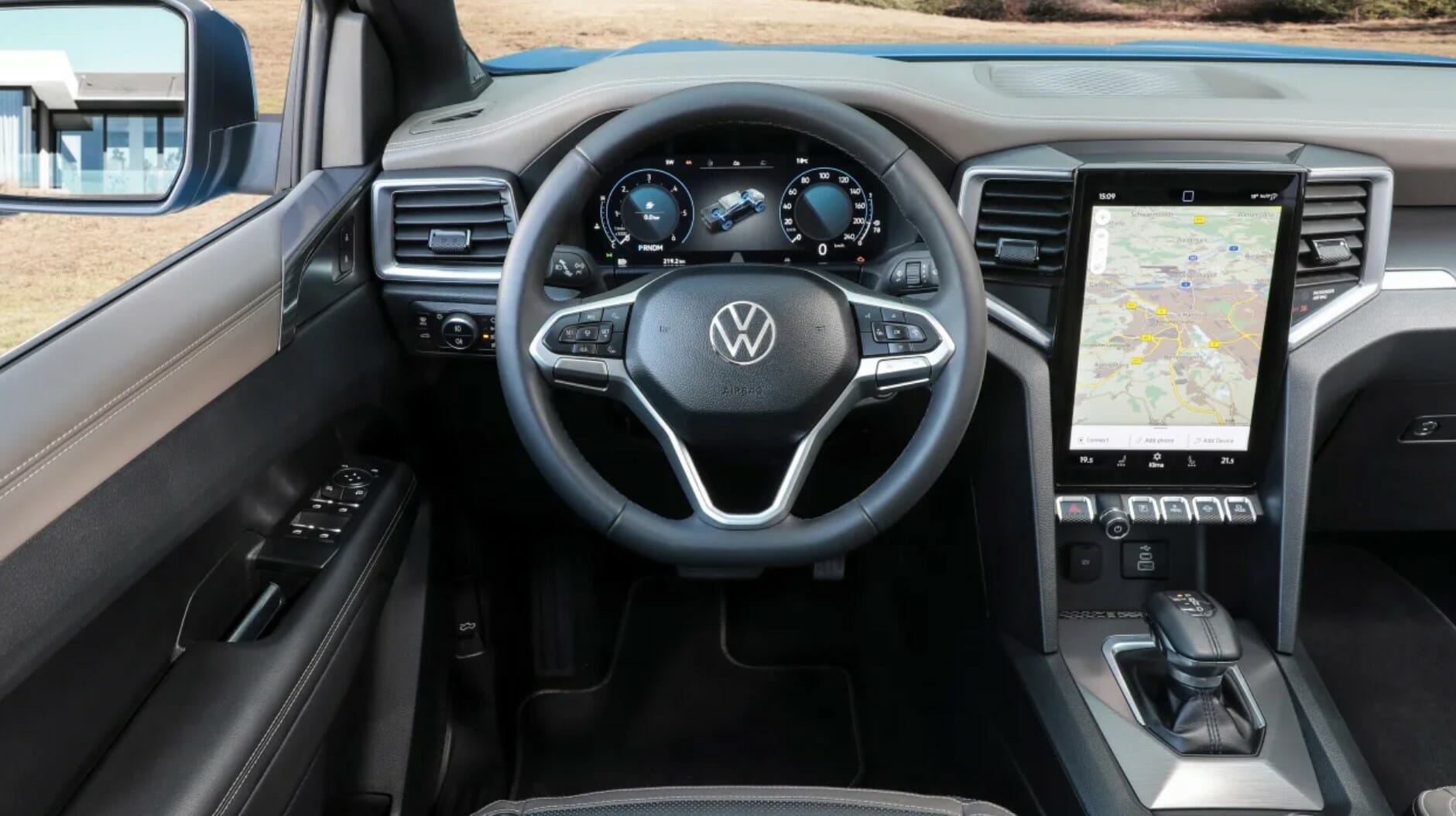Is the new Volkswagen Amarok just a re-skinned Ford Ranger? We test drive the new model ahead of Australian deliveries to find out what it brings.
The Volkswagen Amarok is back as an all-new model and it has some pretty big shoes to fill. VW sold more than 830,000 first-generation models worldwide, and the German car maker is hoping that the new truck can emulate that success. And much of that will be in Australia given our market’s appetite for utes is untouched on the sales chart.
While the new Amarok isn’t available here until next year we’ve had a first drive of the 3.0-litre diesel V6 Aventura in South Africa ahead of then, and it reveals the new model has improved in many ways over the old.
First, a little history: when the first-generation Amarok launched in 2010, it did so with an in-house body-on-frame construction and a range of VW’s proprietary powertrains, of which the 3.0-litre V6 TDI was by far the most popular. With easier drivability and a more hospitable cabin than its rivals, the Mk1 sold well, especially considering its maker had no prior experience of building mass-market pick-ups/bakkies/utes around the world. However, volumes weren’t quite high enough to ensure that a successor would follow.
To help its cause, Volkswagen has joined forces with Ford to co-develop the Amarok alongside the new Ranger. Lurking beneath the Amarok’s exterior is the recently updated Ford Ranger, with its revised T6 platform. We’ll come onto the immediate consequences of this fact in a moment, but it’s worth stopping to appreciate its significance in the broader sense. With Volkswagen having invested so heavily in EV strategy, its ability to develop ICE-based legacy products has been hamstrung, particularly in respect to lower-volume commercial vehicles. Equally, Ford has a good platform for its larger electric vehicles and you’ll find it underpinning the Mach-E SUV, but for smaller cars it’s already well off the pace, unlike VW, which has its own MEB platform. It means the two companies are ripe for technology and hardware sharing, and the new Amarok is the very first fruit of this partnership. None of this is breaking news, of course, but it’ll strengthen the hand of two global car-making giants considerably.
For Amarok, Ford has clearly led the project, which began in 2018 and has mostly taken place in Australia. Is it a canny bit of badge-engineering from VW? Not quite. Of the body, only the roof, wing-mirror caps and door handles are actually shared. Though architecturally identical, the interior is also appreciably different, and engineers from the German company were seconded to Ford, having particular input into the refinement qualities of the car’s suspension and EPAS. Even so, as something leaf-sprung and live-axled at the rear and with true agricultural intentions, anybody hoping the new Amarok will move with the grace of an air-suspended Touareg (or, for that matter, the downright silken new Ford Ranger Raptor, with its independent back axle and clever dampers) is going to be disappointed.
The Ford bits amount to everything else. Powertrain options range from a 125kW four-cylinder turbodiesel to the top-billing 184kW, 600Nm 3.0-litre V6 turbodiesel tested here, with a 154kW four-pot, sequentially turbocharged diesel splitting the difference. Then there’s the 222kW, 454Nm turbo four-pot petrol which is unique to the Volkswagen Amarok in Australia.
Interestingly, V6-carrying capability was engineered into Ford’s T6 platform at VW’s insistence, and is why the new Ranger Raptor now carries an engine its chassis deserves, rather than the previous model’s ordinary four-cylinder diesel. Note also that while some markets will get a utility-spec Amarok with a manual transmission and single cab, Australiais double-cab only for now.
Ford’s 10-speed torque-converter automatic (with clutch-based variable-torque distribution) sends drive predominantly to the rear wheels but engaging the fronts as needed. However, there’s also a locking rear differential and the ability to select permanent 4WD, plus a new low-range transfer case. Plenty to be getting on with, then.
Inside, there’s a bit more of a mish-mash between VW and Ford elements in terms of the cabin appearance, but apart from the blocky keyfob, there’s nothing that instantly screams that you’re driving anything other than a VW. The multifunction steering wheel is familiar from other VW products, but the vast 12.3-inch portrait touchscreen is the same as you’ll find in a Ranger. The bank of knurled plastic toggle switches below is a unique Amarok touch. Space overall is good, courtesy of a double cab that’s longer than its predecessor’s and boosts space for passengers in the back.
It’s handy that Ford and VW use the same basic light control arrangement in their cars. Both manufacturers fit their models with a panel to the right of the steering wheel for selecting illumination, so Amarok drivers will have a familiar set-up to use, albeit with Ford-style switches instead of VW’s latest touch-sensitive panel. That touchscreen and the large Virtual Cockpit digital dials are also shared with top-spec versions of the Ranger, but VW does at least use its own software and graphics to put distance between the two trucks.
Overall quality is good, and the top-spec Aventura and new PanAmericana trims are very well-equipped. There’s Android Auto and Apple CarPlay included, while over-the-air updates will keep the in-house software fresh, too. Unlike some VW models, the Amarok doesn’t have wireless smartphone connectivity, but it does have USB-A and USB-C sockets – another carry-over from the Ford collaboration, because if it was an all-VW product, you can guarantee it would only have a pair of USB-Cs instead. Wireless charging is offered, while leather, two-zone climate control and a full suite of safety kit and driver assistance tech also features, giving the Amarok the feel of an upmarket SUV.
Ten kays through light-to-moderately gruelling South African bush was dispatched with ease and decent wheel articulation, though the brakes did occasionally grab without warning in hill-descent mode. In terms of geometry, Ford underpinning clearly does the new Amarok no harm: shorter overhangs improve the significant off-road metrics and wading depth is up from 500mm to 800mm, and greater still with the optional exhaust snorkel. Fit the optional underbody protection and you’d need a Wrangler on knobblies to go much further afield.
There’s plenty of power off the line, especially when the truck is unladen, but the multiple ratios of the Ford-sourced transmission mean that if you need a quick punch of acceleration when overtaking, you need to wait briefly while the gearbox reacts and kicks down two or three cogs. It’s by no means jerky in its operation, and it picks the right gear for the right amount of acceleration, you just need to do a bit of forward planning. There is a manual mode, but it’s operated via two buttons on the side of the drive selector – another carry-over from the Ranger, and there are no steering wheel paddles – which makes it fiddly to use. On the whole, it’s best to leave the electronics to look after changing gears.
Objectively there’s no doubt the new Amarok is quieter and more cosseting than its forebear. In fact, on smooth motorways it does a passable impression of something from VW’s passenger car stable, rather than its commercial vehicle wing. So long as the road asks nothing complicated of the rear axle, at speed you’re treated to gentle undulation and an ambience peaceful enough for quiet conversation. Suddenly the presence of this car’s fancy Harman Kardon sound system makes sense. Yet, on more twisting or choppier routes, the underlying ute reveals itself. There is nothing surprising about this, and for an out-and-out ute the Amarok drives well enough. What I slightly resent is that the steering – accurate and sensibly sped – is less keyed into the road than that of the old Amarok.
One area where that has made great strides is ride comfort, and the new Amarok offers a decent compromise, considering the suspension also has to deal with heavy one-tonne payloads. There isn’t too much fidget, although the Aventura rides on large 21-inch alloy wheels that do send small shakes through the steering wheel. Most bumps are dealt with well, although larger potholes can send big thumps through the body.
A kerbweight of up to 2.5 tonnes is actually reasonable when compared with some heavyweight SUVs these days, while top-spec models feature 360-degree cameras and parking sensors front and rear to help prevent knocks and dings.
The new Volkswagen Amarok is an upmarket offering for dual-cab ute buyers wanting a plush machine that isn’t afraid of hard work. It’s still not quite the SUV alternative that some buyers might expect, but it gets closer to that brief than it ever has done before, while still offering the rugged appeal that made the original Amarok so popular. However, the new model’s main issue will be whether it can be competitive on price – yet to be confirmed – with the parts-sharing Ford Ranger.
| Model: | Volkswagen Amarok 3.0 TDI Aventura |
| Price: | $80,000 (est) |
| Engine: | 3.0-litre V6 twin-turbo |
| Power/torque: | 184kW/600Nm |
| Transmission: | 10-speed automatic, switchable four-wheel drive |
| 0-100km/h: | 8.0 seconds (est) |
| Top speed: | 180km/h (est) |
| Economy: | 8.6L/100km (est) |
| CO2: | 266g/km |
| On sale: | Q1 2023 (Australia) |




